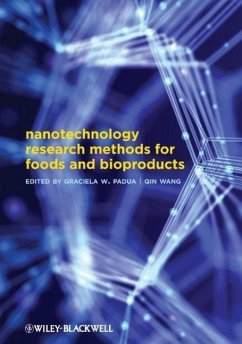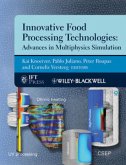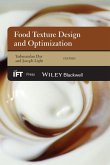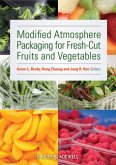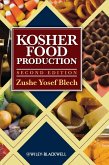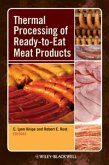Food nanotechnology is an expanding field. This expansion is based on the advent of new technologies for nanostructure characterization, visualization, and construction. Nanotechnology Research Methods for Food and Bioproducts introduces the reader to a selection of the most widely used techniques in food and bioproducts nanotechnology. This book focuses on state-of-the-art equipment and contains a description of the essential tool kit of a nanotechnologist. Targeted at researchers and product development teams, this book serves as a quick reference and a guide in the selection of nanotechnology experimental research tools.
Nano-scale sized particles are not new - they exist naturally. However, our ability to visualize, understand and control matter at the nanoscale is new. Recent recognition of the impact of nanoscale materials on the overall structure and functionality of foods and biological tissues is driving new interest in their study. Nanotechnology has high potential in food science and technology: major impacts are foreseen in nutrition, food quality, food packaging and food safety assurance. The rapid implementation of nanotechnology concepts in industry and academia creates the need for information on instruments and methods among researchers and product development teams. Also, the advent of new structures has led to regulatory re-examination of materials involved. The selection of appropriate characterization instruments and methods is critical to this endeavor.
Nanotechnology Research Methods for Foods and Bioproducts describes the properties of food materials and biological components relevant to nanotechnology developments, explains the concept of self-assembly, and reviews the formation and applications of nanocomposites and nanocolloids. The book introduces the reader to a selection of the most widely used techniques in food and bioproducts nanotechnology. It is intended as a quick reference and a guide to the selection of research tools. The focus is on state-of-the- art equipment; thus, it contains a description of the tool kit of a nanotechnologist. Concise explanations for the technical basis of the methods being described are included and research opportunities are highlighted, together with potential pitfalls and limitations. Later chapters cover nanostructure characterization techniques including: Scanning Electron Microscopy, Transmission Electron Microscopy, Dynamic Light Scattering, X-ray Diffraction, QCM-D, Focused Ion Beam, and Micro-Computer Tomography.
This book is aimed at researchers new to the field of nanotechnology. It is meant to inform students in formal and informal settings, new researchers and product development teams in the expanding field of food and bioproducts nanotechnology.
Nano-scale sized particles are not new - they exist naturally. However, our ability to visualize, understand and control matter at the nanoscale is new. Recent recognition of the impact of nanoscale materials on the overall structure and functionality of foods and biological tissues is driving new interest in their study. Nanotechnology has high potential in food science and technology: major impacts are foreseen in nutrition, food quality, food packaging and food safety assurance. The rapid implementation of nanotechnology concepts in industry and academia creates the need for information on instruments and methods among researchers and product development teams. Also, the advent of new structures has led to regulatory re-examination of materials involved. The selection of appropriate characterization instruments and methods is critical to this endeavor.
Nanotechnology Research Methods for Foods and Bioproducts describes the properties of food materials and biological components relevant to nanotechnology developments, explains the concept of self-assembly, and reviews the formation and applications of nanocomposites and nanocolloids. The book introduces the reader to a selection of the most widely used techniques in food and bioproducts nanotechnology. It is intended as a quick reference and a guide to the selection of research tools. The focus is on state-of-the- art equipment; thus, it contains a description of the tool kit of a nanotechnologist. Concise explanations for the technical basis of the methods being described are included and research opportunities are highlighted, together with potential pitfalls and limitations. Later chapters cover nanostructure characterization techniques including: Scanning Electron Microscopy, Transmission Electron Microscopy, Dynamic Light Scattering, X-ray Diffraction, QCM-D, Focused Ion Beam, and Micro-Computer Tomography.
This book is aimed at researchers new to the field of nanotechnology. It is meant to inform students in formal and informal settings, new researchers and product development teams in the expanding field of food and bioproducts nanotechnology.

